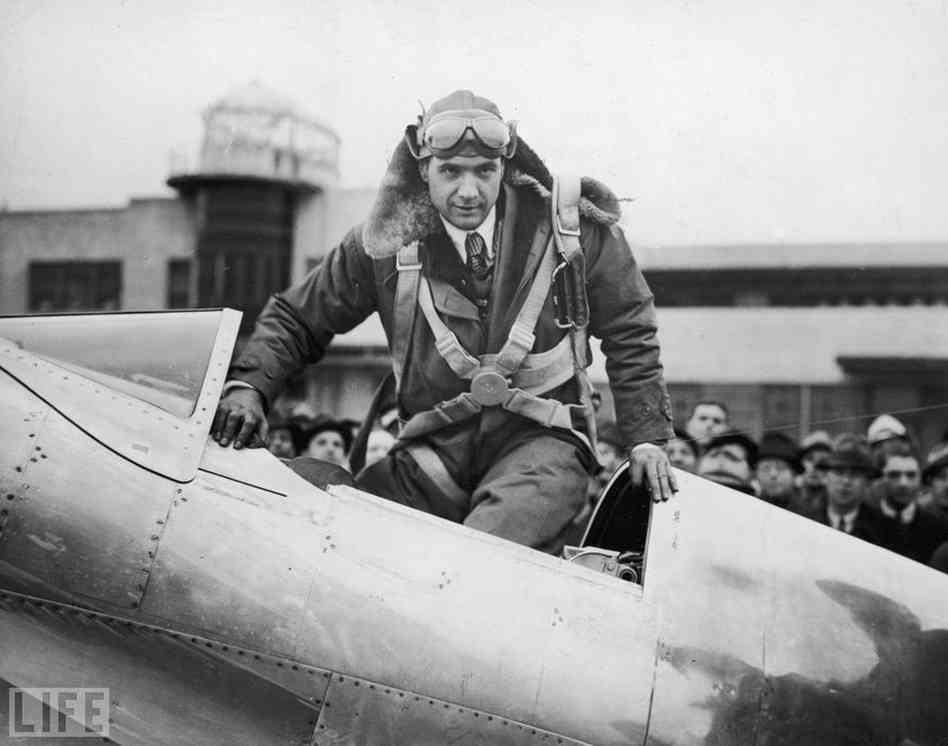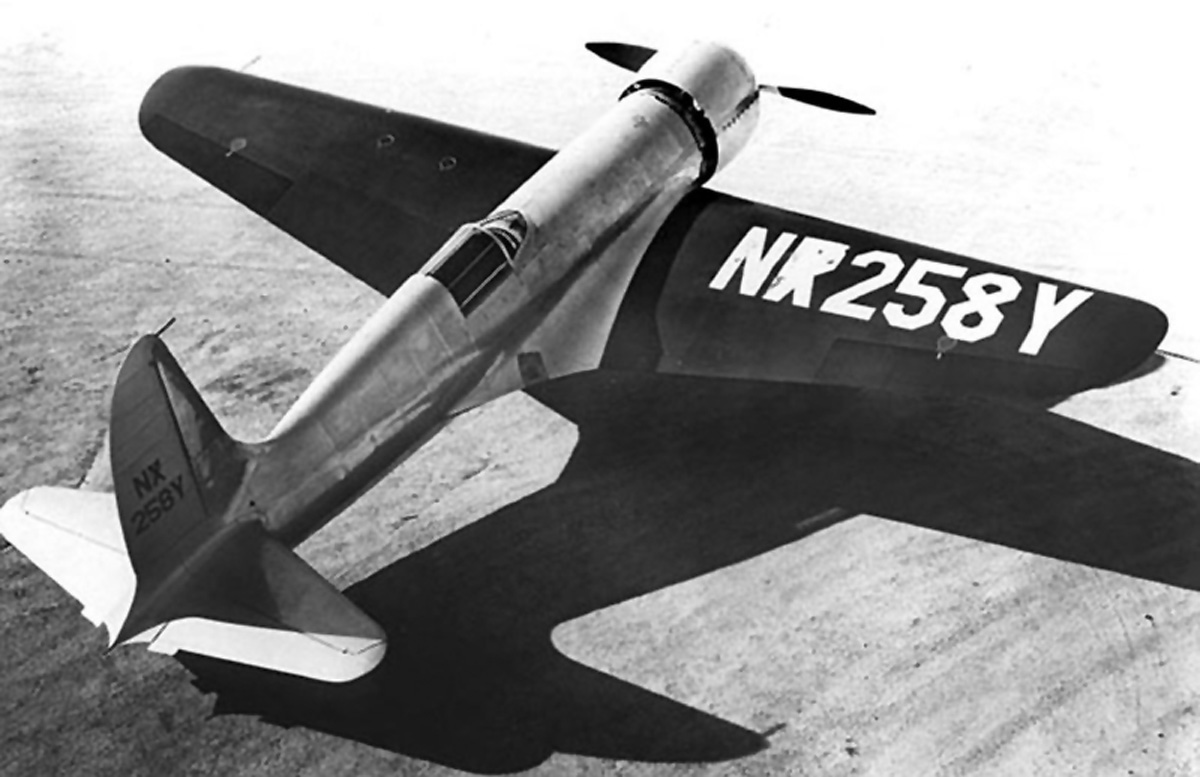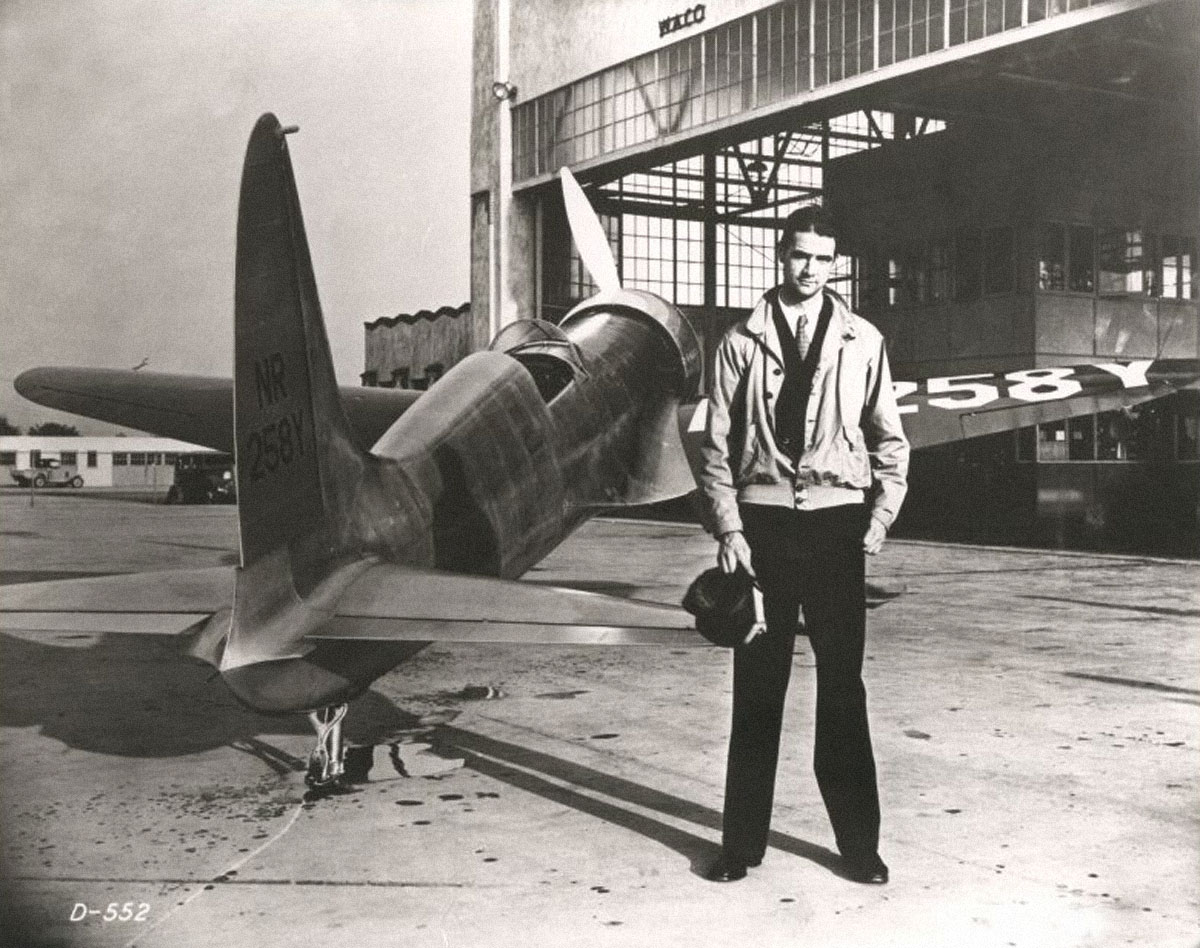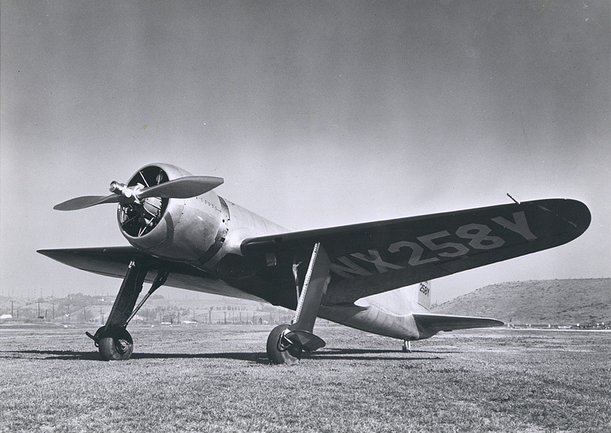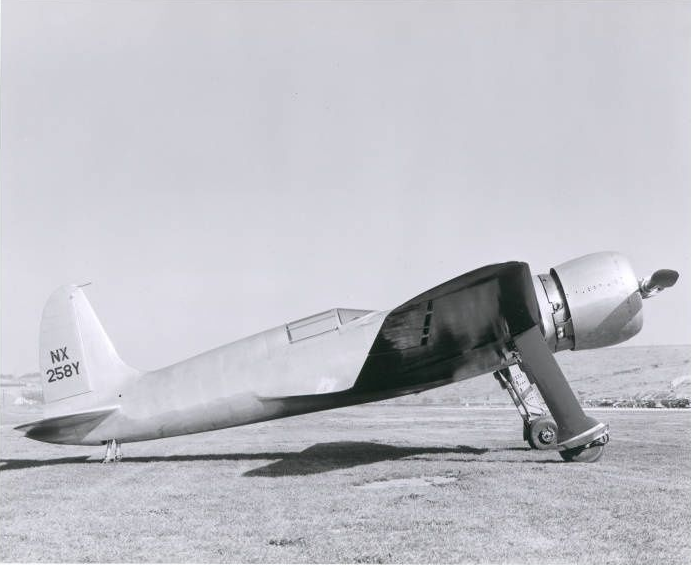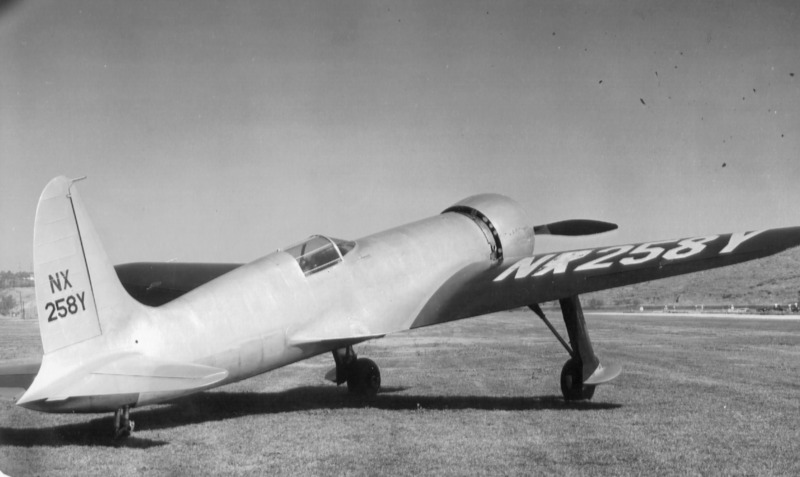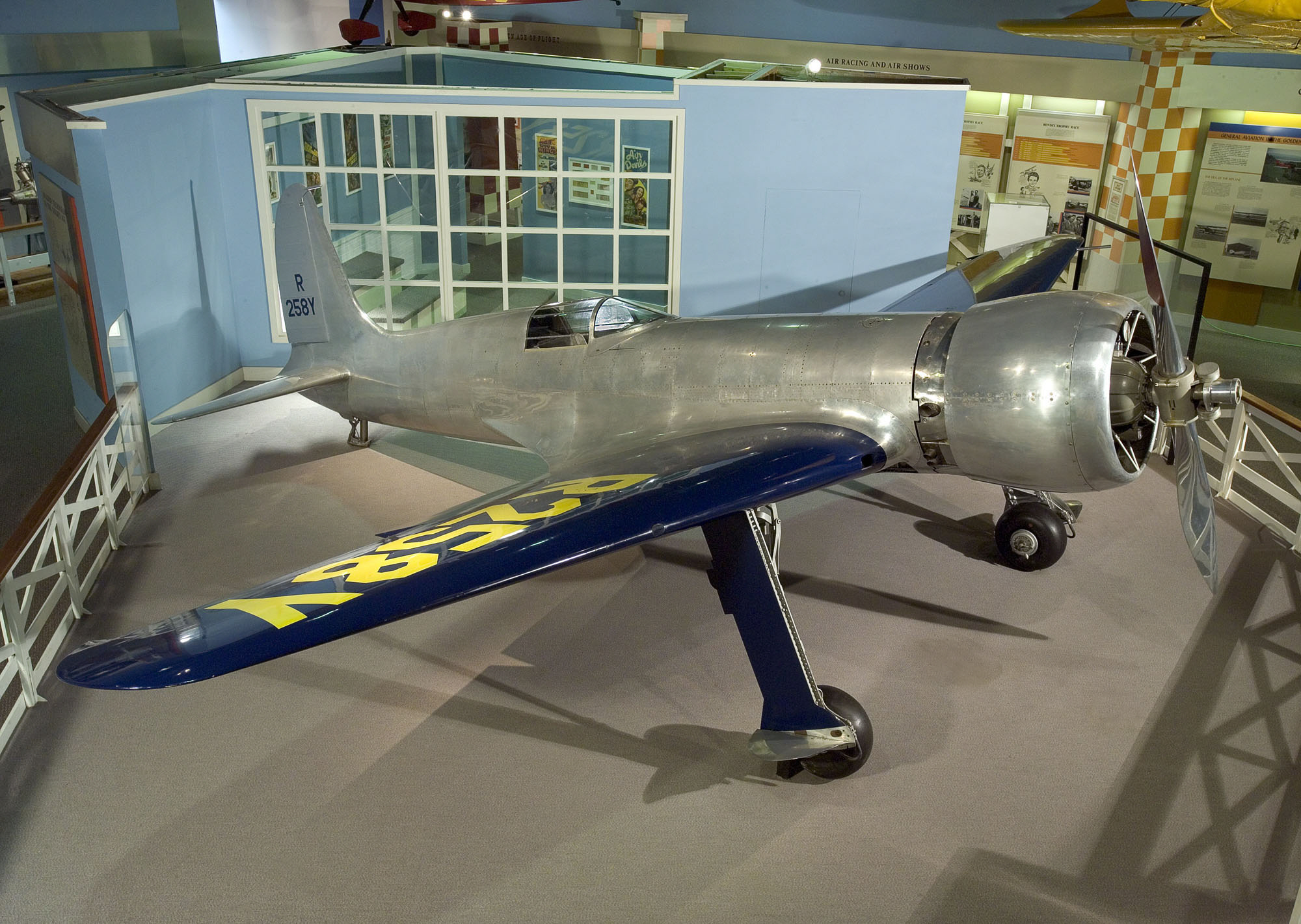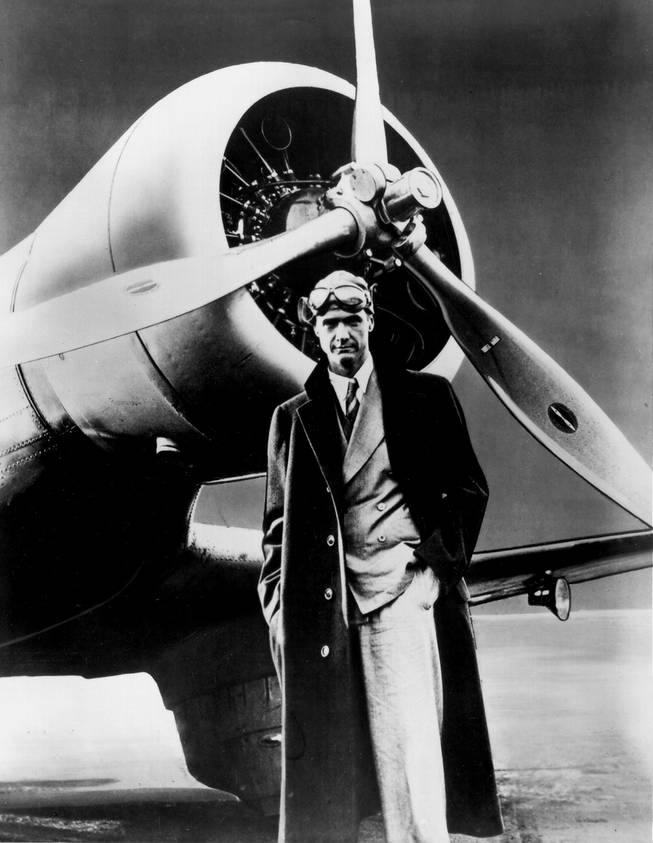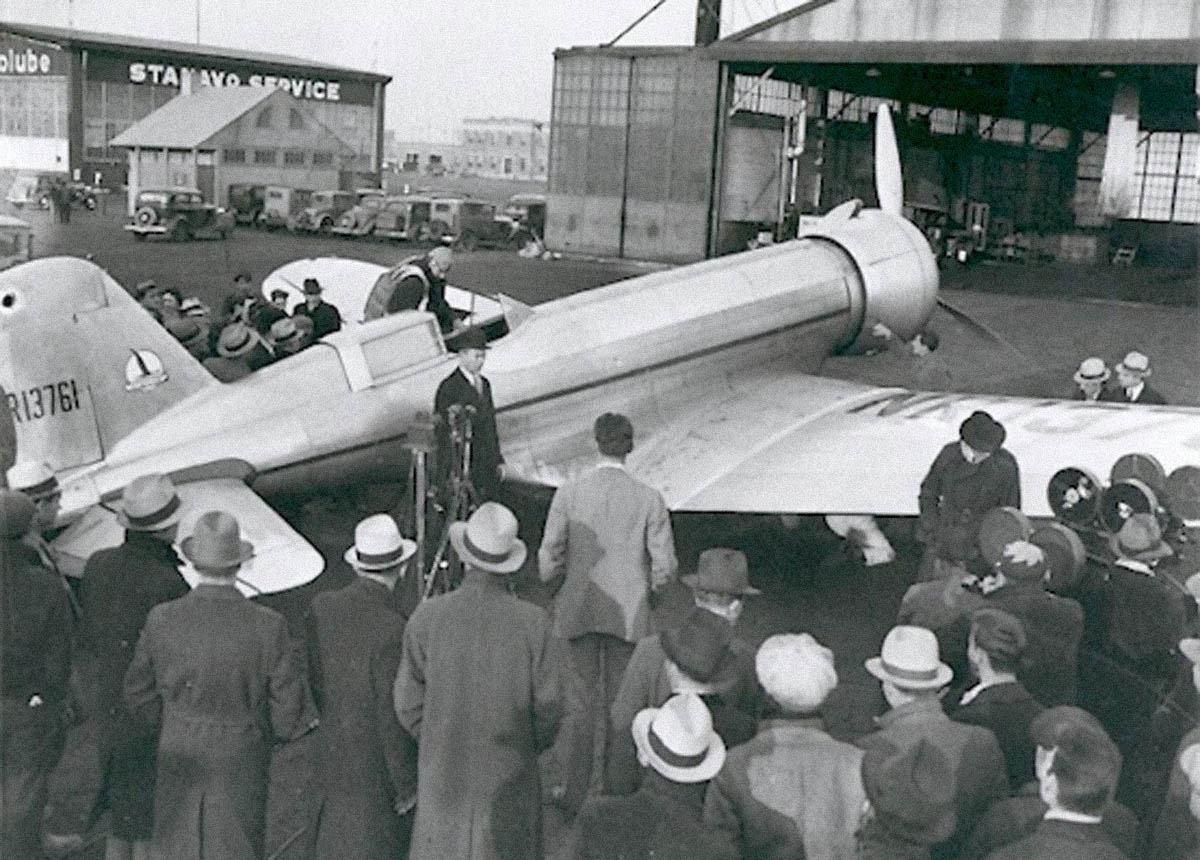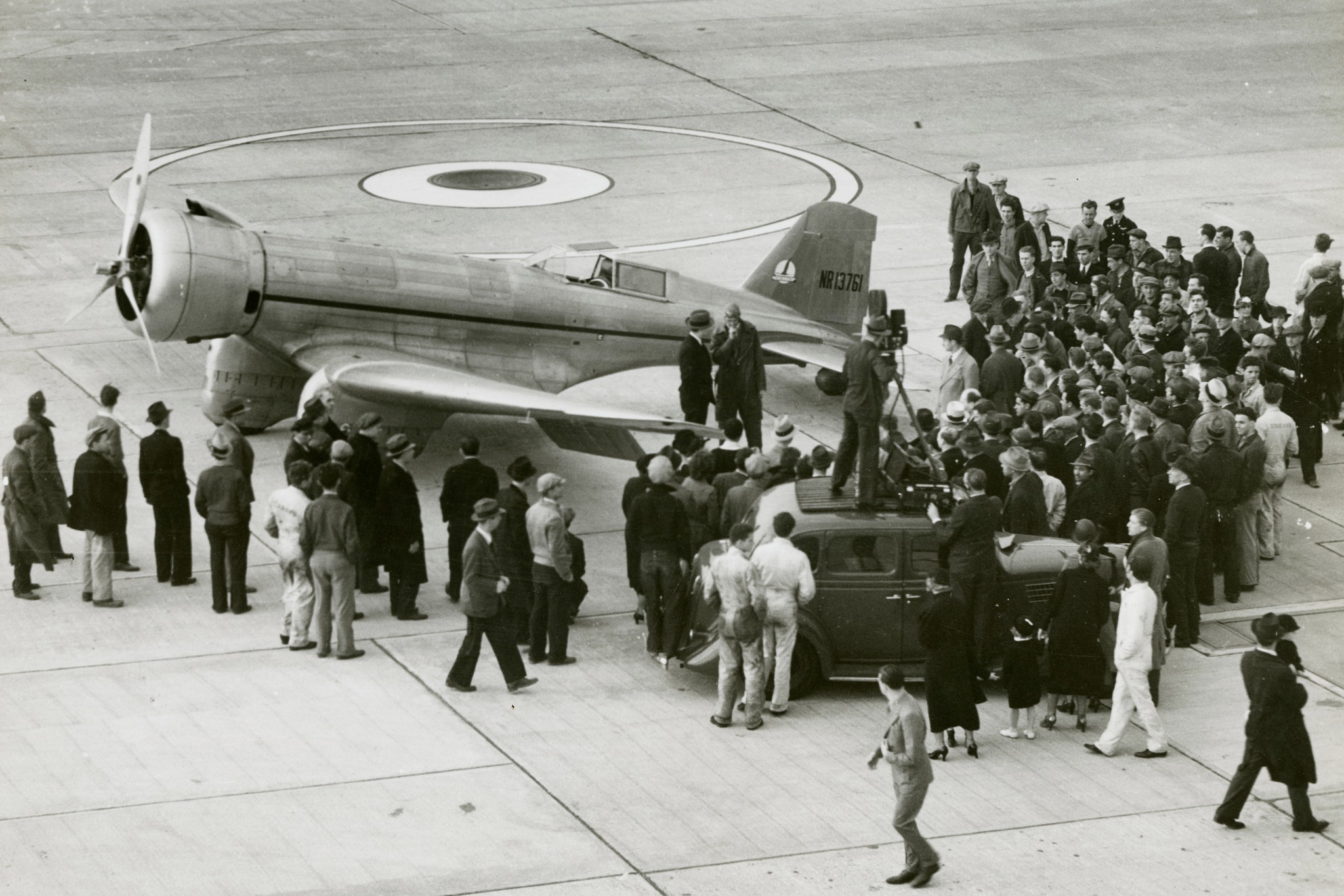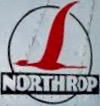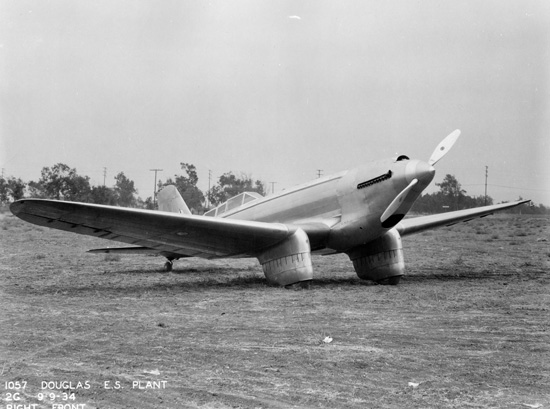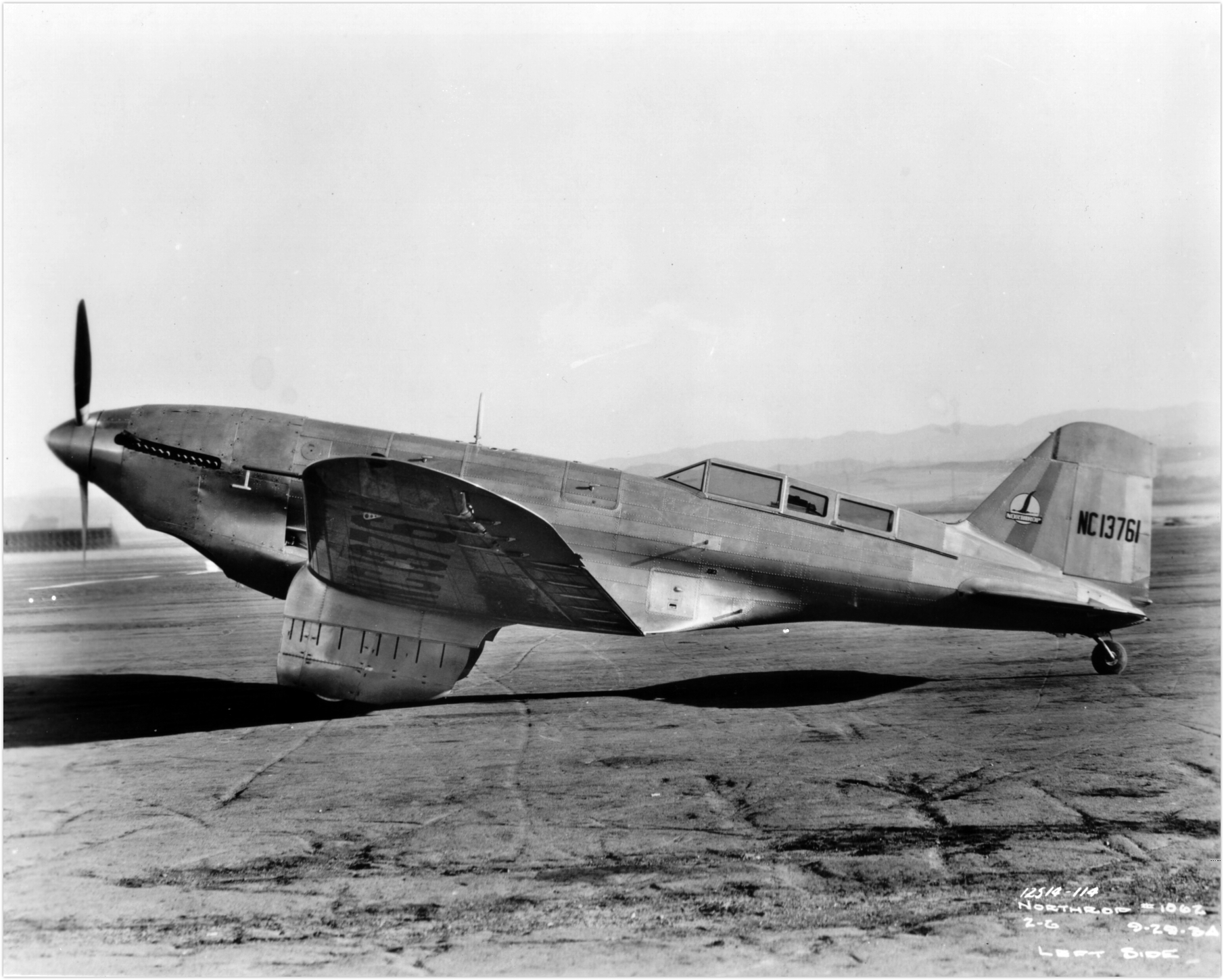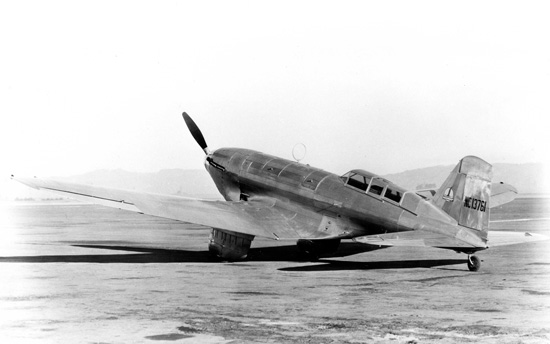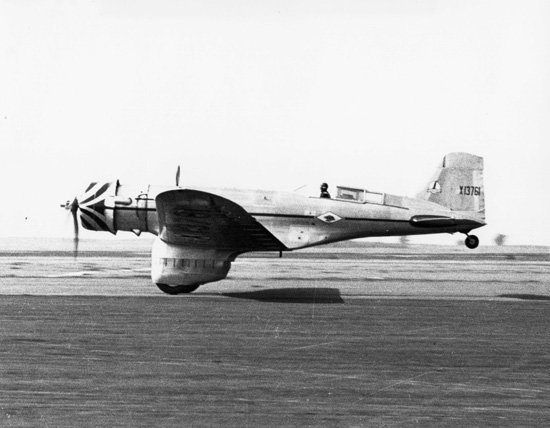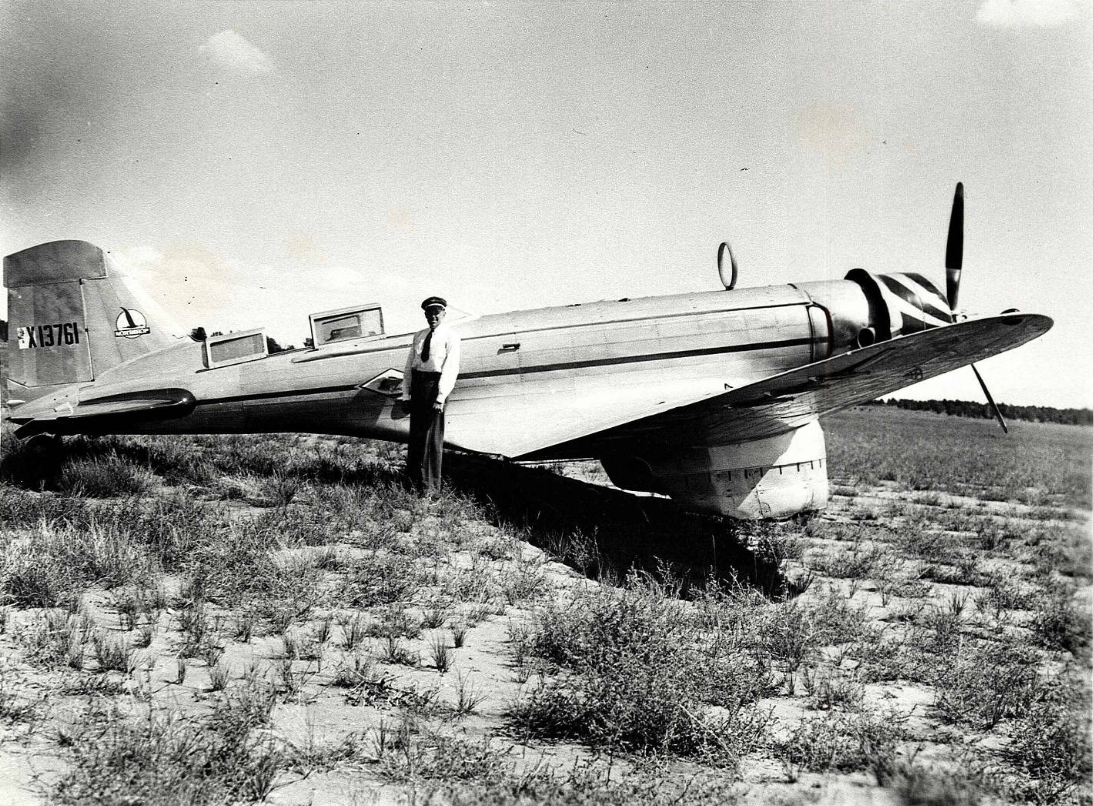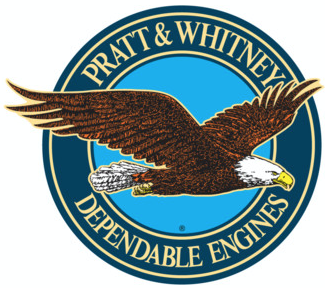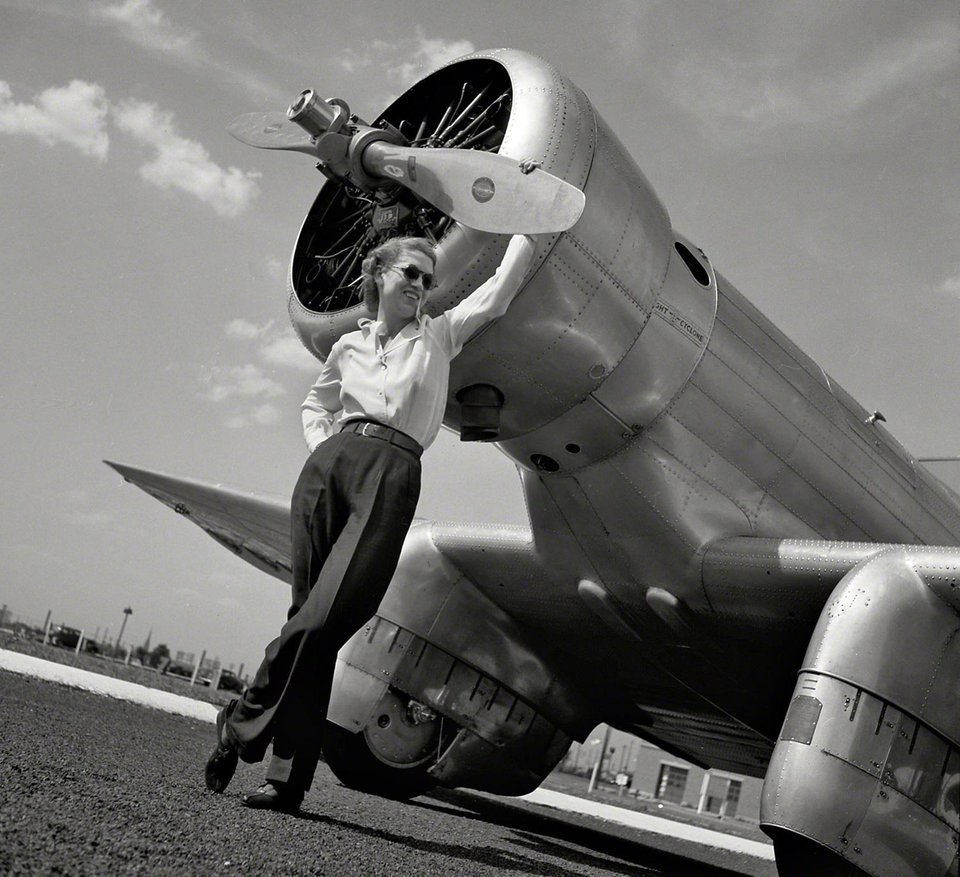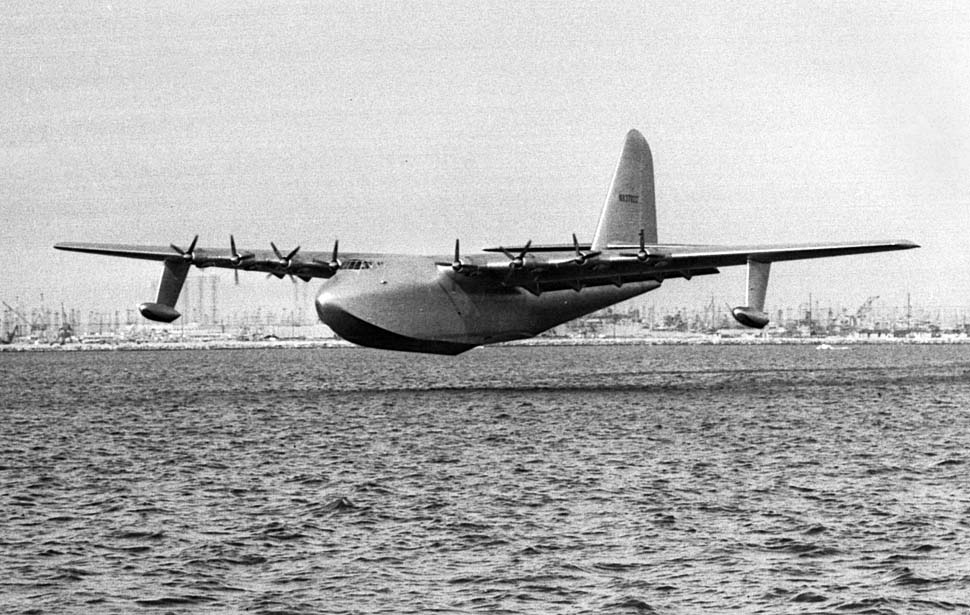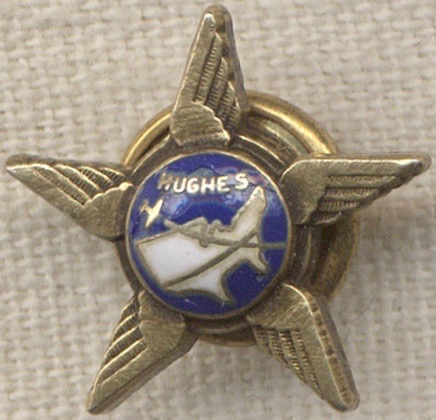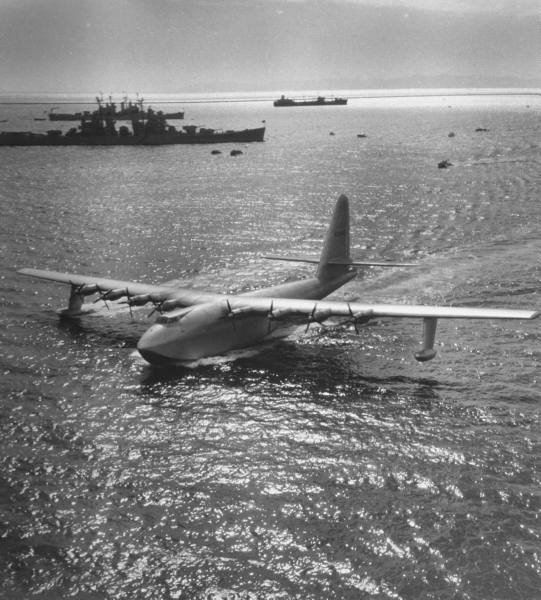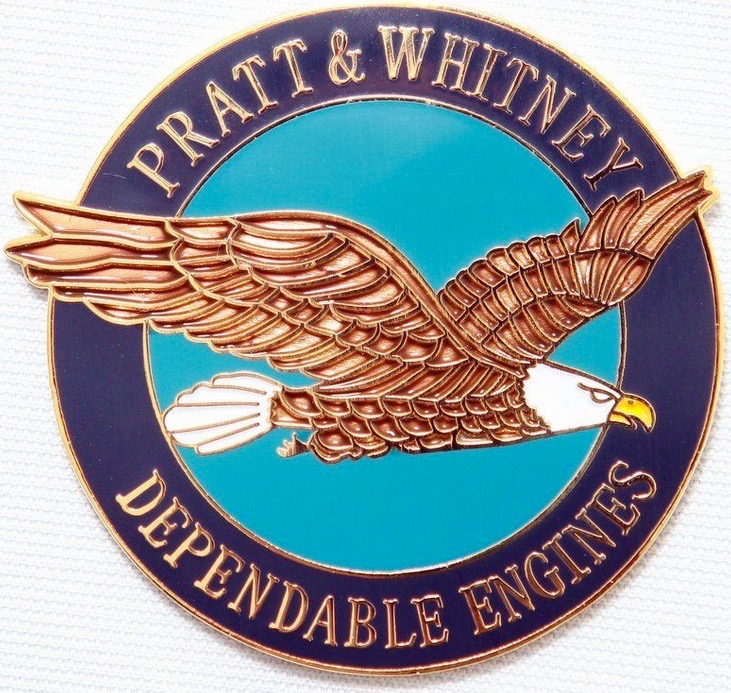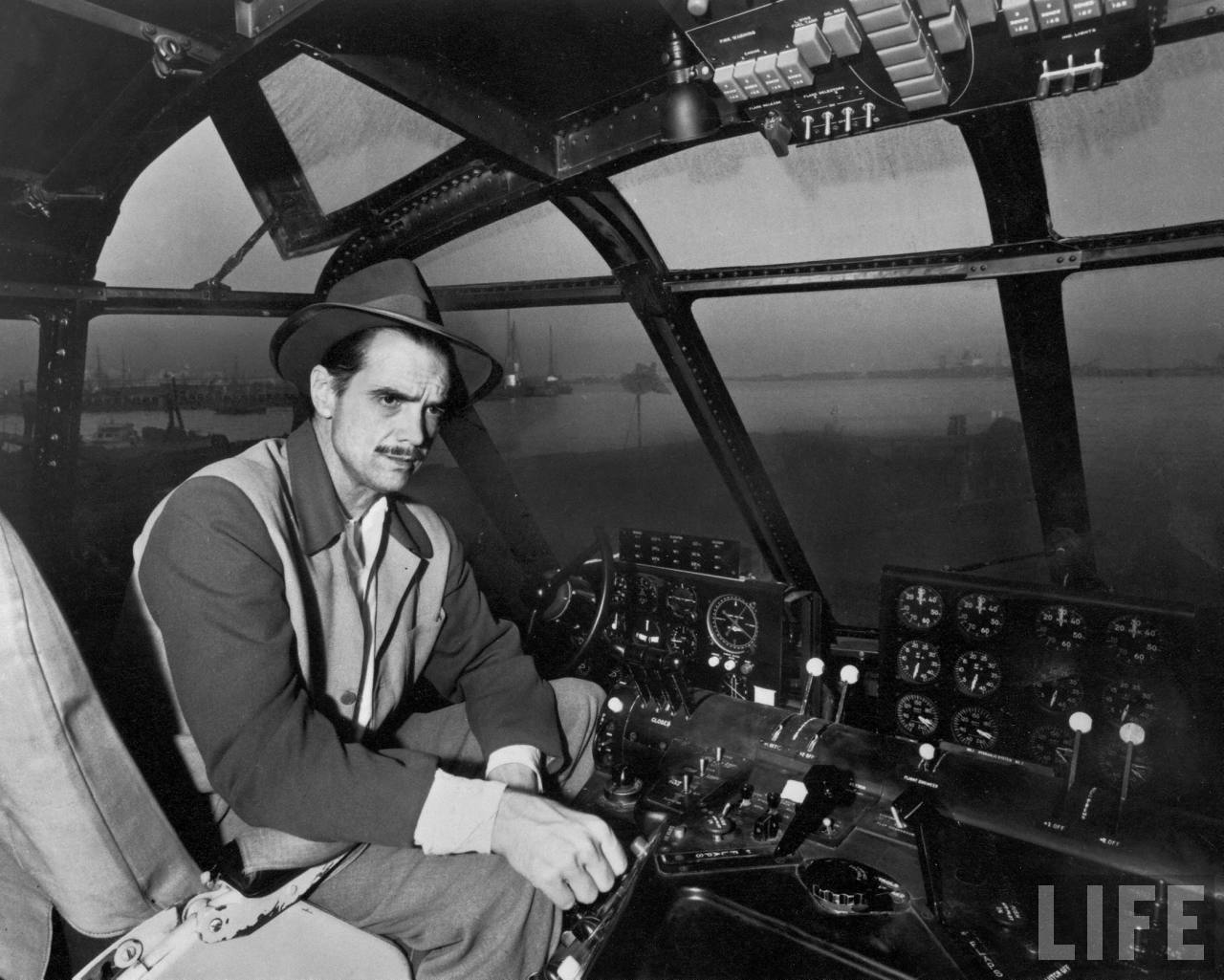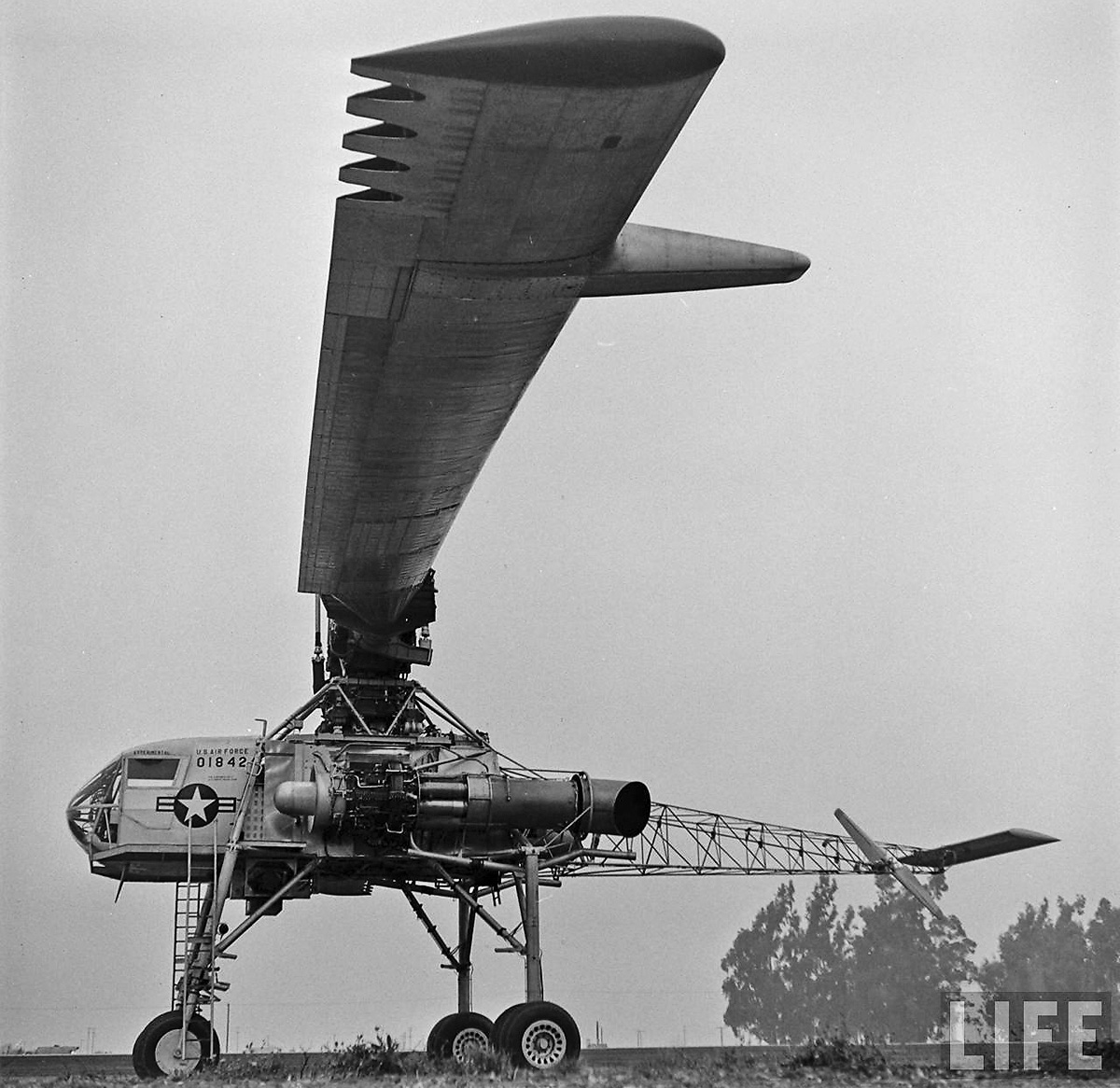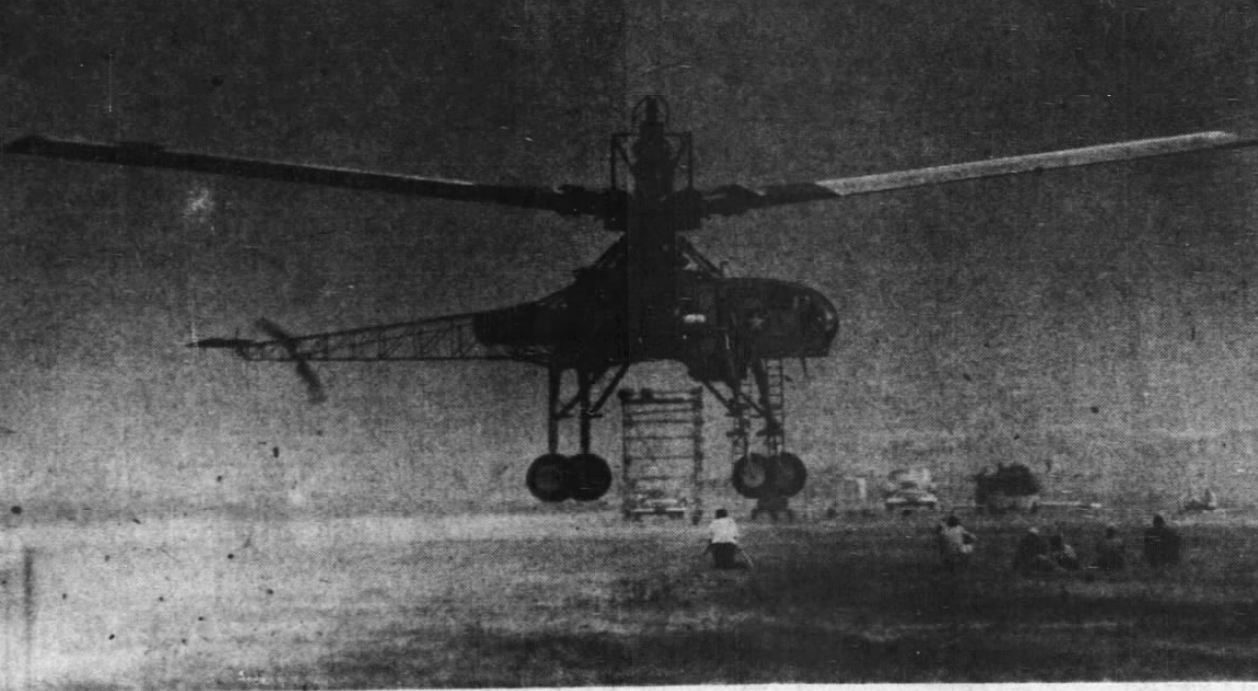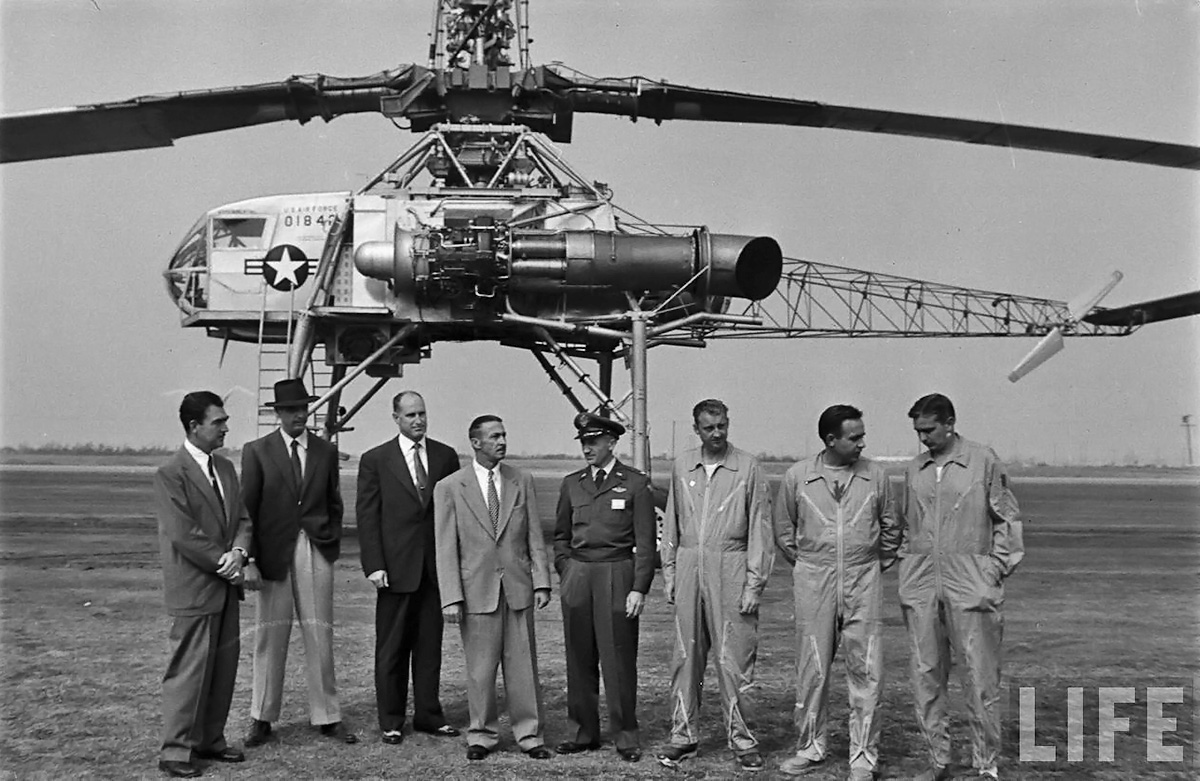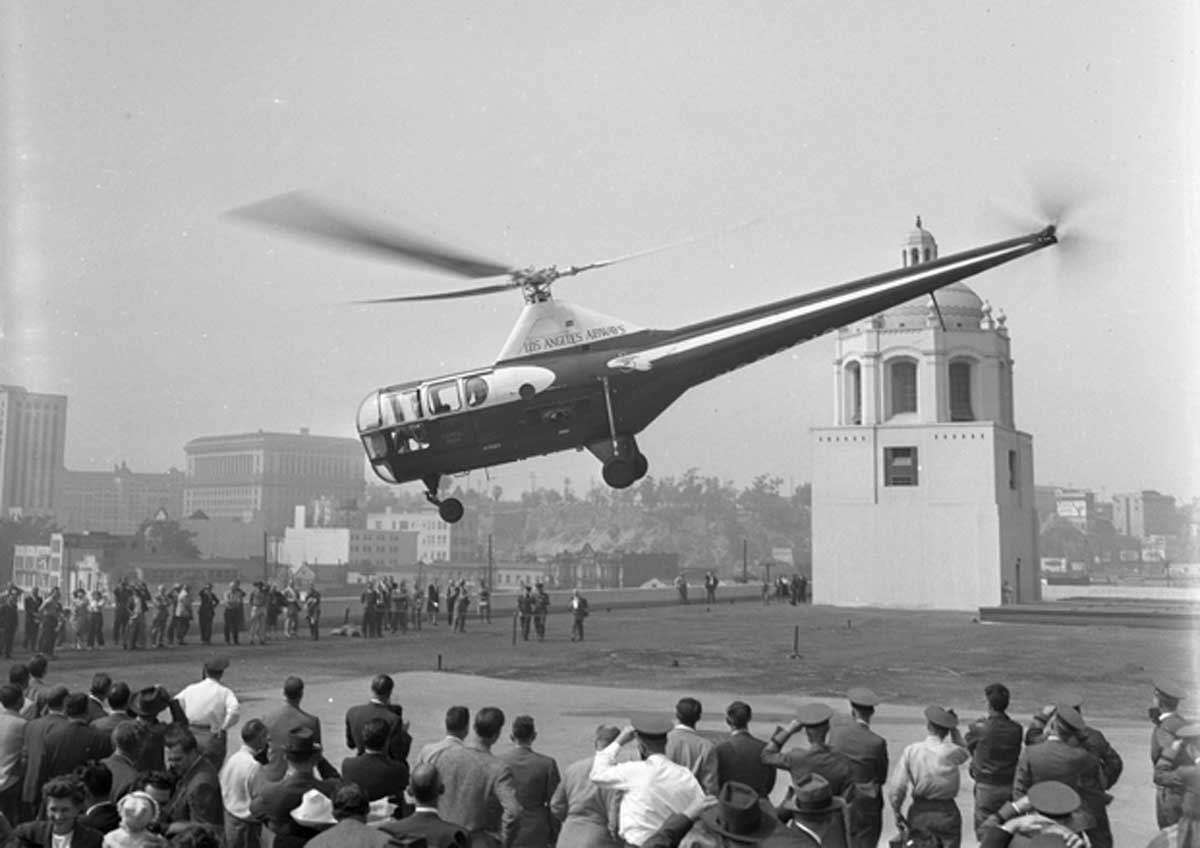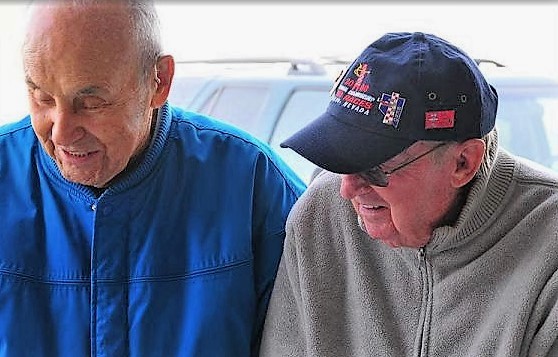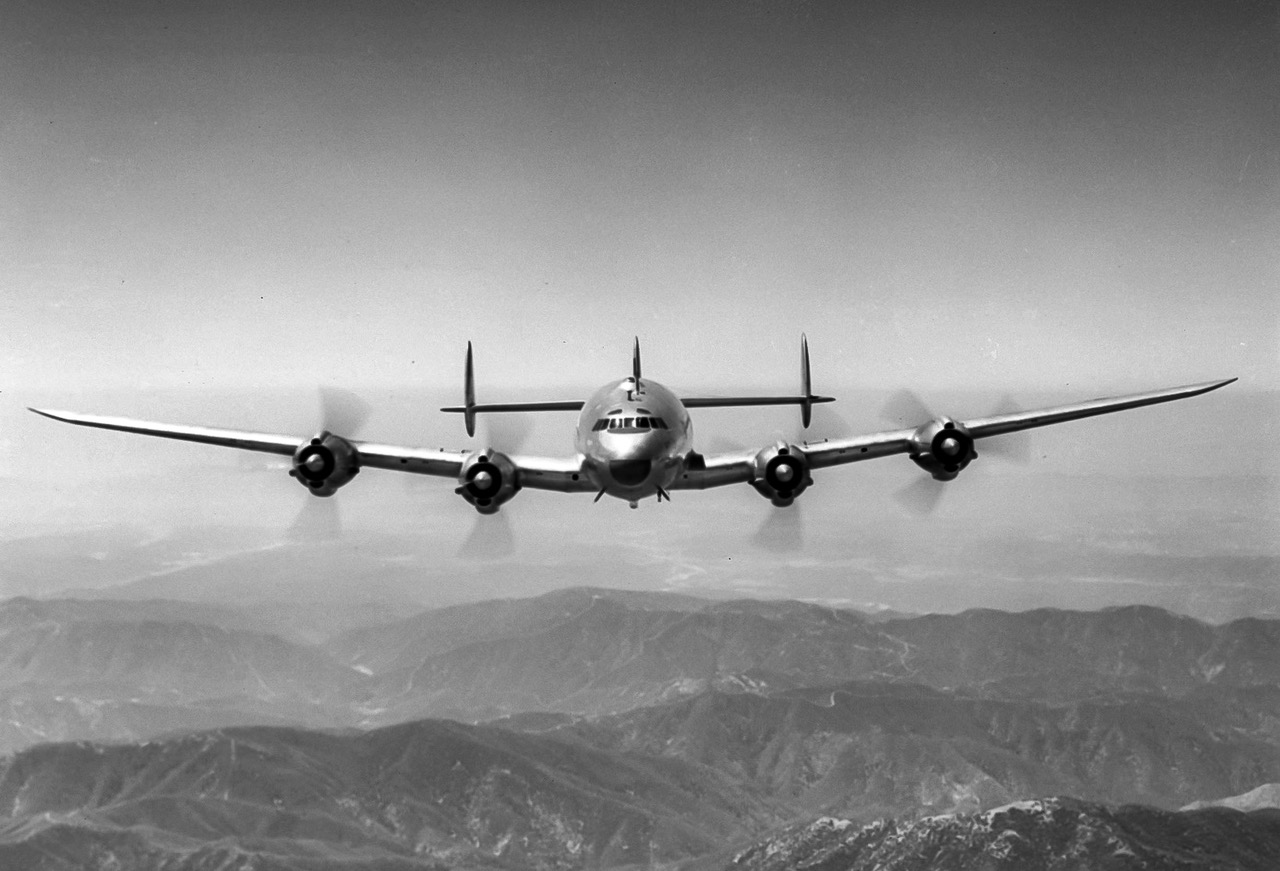
17 April 1944: The first production Lockheed C-69 Constellation, 43-10310, was delivered to the Air Transport Command at National Airport, Arlington, Virginia. The new transport carried the markings of Transcontinental and Western Airlines (T.W.A.), and was flown by that company’s owner, Howard Robard Hughes, Jr., and T.W.A.’s president, William John (“Jack”) Frye.
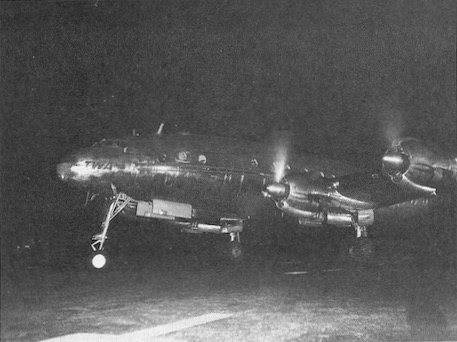
The C-69 departed Lockheed Air Terminal, Burbank, California, at 3:56:45 a.m., Pacific War Time. The other crew members were Edward T. Bolton, Navigator; R. L. Proctor, Flight Engineer; and Charles L. Glover, Radio Operator. Also on board were 12 passengers representing the Air Corps, T.W.A. and Lockheed.¹
The Dayton Herald reported:
Constellation Sets Record; To Be in Dayton Thursday
(BULLETIN)
WASHINGTON, April 17.—(UP)—The giant transport Constellation landed at Washington National Airport at 1:59 p.m. EWT today, setting a new trans-continental airplane speed record.
The huge four-motor transport made the crossing from Burbank, Calif., in approximately 7 hours and three minutes on the basis of unofficial timing. Howard Hughes, who set the previous record, piloted the plane here for delivery to the Army.
The Constellation, Transcontinental and Western Airline’s (TWA) super transport, which left Burbank, Calif., today for delivery to the air transport command at Washington, will fly to Wright Field Thursday afternoon, Material Command officials said here.
Considered the largest land-based cargo plane in the country, the “Constellation” took off from Lockheed Air Terminal at 5:56 a.m., (Dayton time) today with veteran pilot Howard Hughes and Jack Frye, TWA president, co-designers of the plane, as pilot and co-pilot, respectively. It passed over Butler Mo., 50 miles south of Kansas City, at 10:20 a.m. (Dayton time).
Materiel Command officials said the plane was expected to make the trip in nine hours. They estimated she could fly from Los Angeles, Calif., to Honolulu in 12 hours.
Also aboard were Lt. Col. Clarence Shoop, resident Material Command inspector at the Lockheed Burbank plant, 17 Lockheed and TWA technical experts and a civilian air expert.
The ship originally was designed to carry 57 passengers, TWA officials said. The airline company commissioned Lockheed to build the plane two years ago.
Hughes described the trip as a “routine delivery mission” and would not say whether he would attempt to break any speed records or whether the flight would be non-stop.
“It all depends on the performance of the Connie,” he said.
The 40-ton ship, which has a cruising speed of 300 miles an hour, took off with enough gasoline for a non-stop trip. Cargo and airline planes in general use now cruise at around 180 miles an hour. Her takeoff was clocked by Larry Therkelsen, National Aeronautical Association timekeeper and official timer of the national air races before the war.
The Constellation is powered by four, 2,000-horsepower Wright air-cooled, radial engines, with 18 cylinders each, the Materiel Command said. It has three-bladed Hamilton Standard propellers and is equipped with a pressurized cabin for stratosphere flights. Its service ceiling is from 20,000 to 35,000 feet.
—The Dayton Herald, Vol. 65, No. 91, Monday, 17 April 1944, Page 1, Columns 5 and 6
Lockheed C-69-LO Constellation 43-10310, c/n 049-1962, was the first production airplane. It had been flown to Las Vegas, Nevada, on the previous day, where T.W.A. personnel applied the company’s livery to the Army Air Corps-owned airplane. Flown by Lieutenant Colonel C. A. Shoup, it then returned to Burbank to prepare for the transcontinental flight.
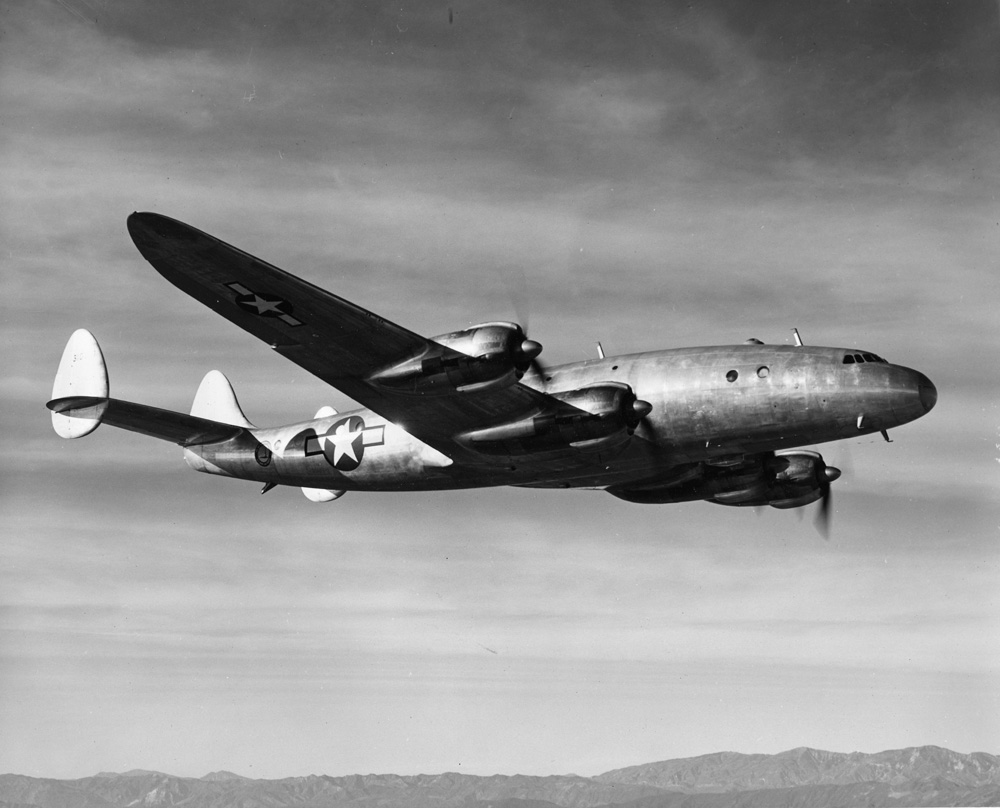
The plan called for Howard Hughes to fly as pilot-in-command for the first half of the flight, with Captain Frye in the right seat. They would switch positions at the half-way point. Both men were experienced four-engine pilots but the Constellation was new to them. In the previous week, they had each made two training flights in the C-69, with Hughes flying 2.9 hours and Frye, 3.4.

Initially, the transport followed T.W.A.’s normal transcontinental route. It had climbed to 15,000 feet (4,572 meters) by the time it reached Kingman, Arizona. The night sky was “CAVU”—ceiling and visibility unrestricted—and there was a bright last-quarter moon shining. Passing north of Winslow, Arizona, the C-69 left the T.W.A. route and turned north to pick up a Great Circle course.
Flying over northern New Mexico, they encountered turbulence and thunderclouds. Hughes climbed to 17,500 feet (5,334 meters) to remain clear of the clouds. Light ice began forming on the airplane as they crossed over Kansas. They climbed into colder, drier air at 18,500 feet (5,639 meters).

Over the eastern part of the state, Jack Frye took over as pilot command and he and Hughes switched places in the cockpit. The C-69 crossed over Butler, Missouri, 50 miles (80 kilometers) south of Kansas City, at 10:20 a.m., Central War Time (8:20 a.m., P.W.T.).
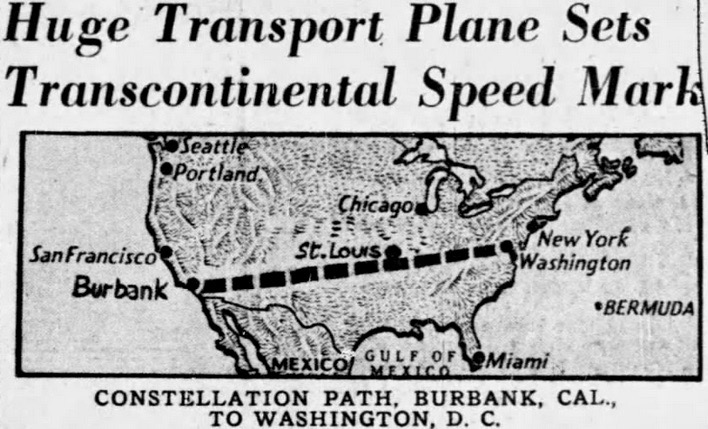
The Constellation crossed overhead Cincinnati, Ohio, at 11:48 a.m., C.W.T. Stormy weather delayed their descent until after crossing the Ohio River.
The Constellation flew overhead National Airport at 1:54 p.m., Eastern War Time (10:54 a.m., P.W.T.). They circled overhead while traffic cleared the runway, then landed four minutes later.
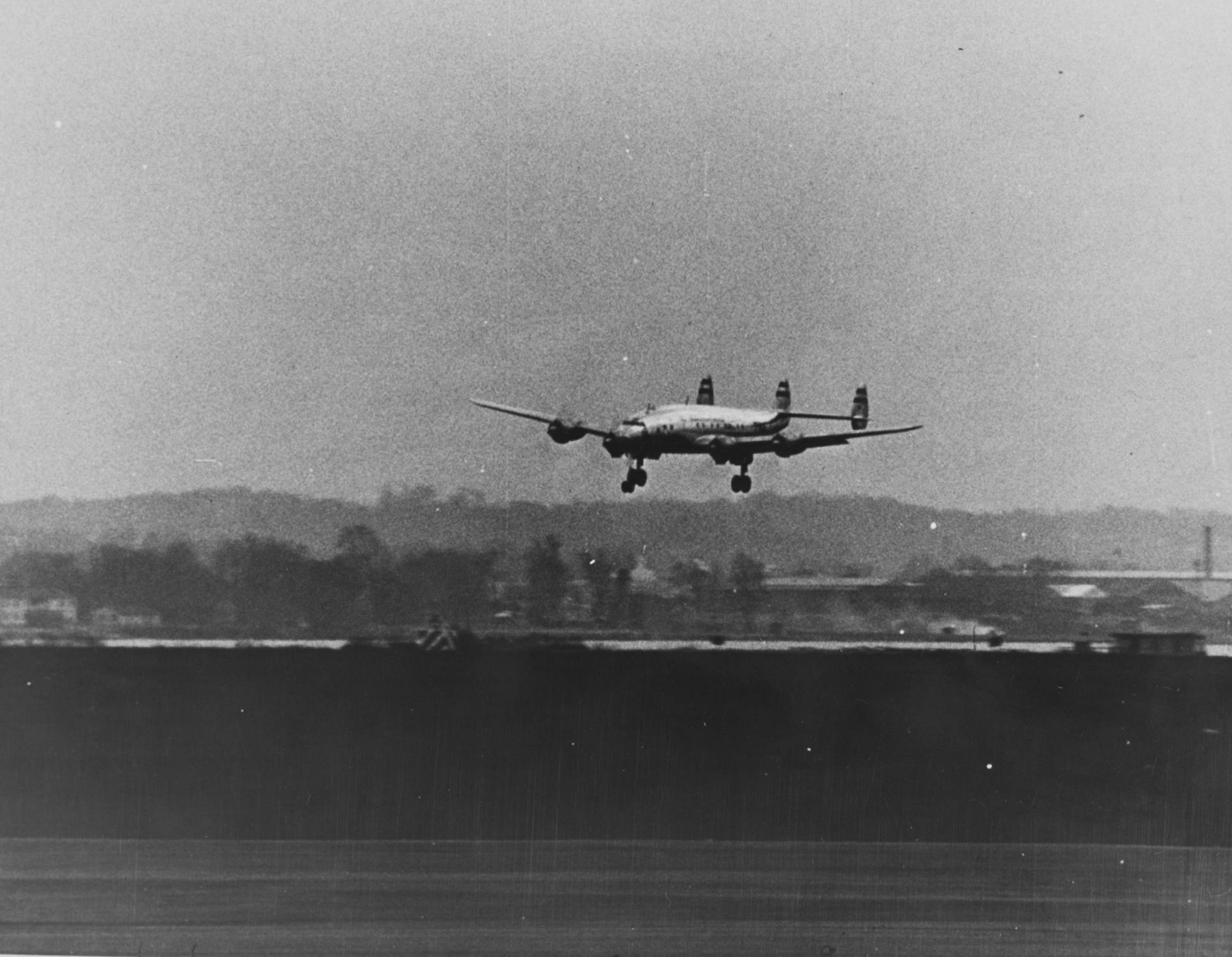
The C-69’s log book showed the Burbank to overhead National Airport flight as having taken 6 hours, 56 minutes, 15 seconds.² The Aircraft Yearbook for 1945 gives the record time as “6 hours, 57 minutes and 51 seconds.” ³
Because of wartime security concerns, the Air Corps would not allow Lockheed or TWA to release specific information about the flight, other than to say that it had broken the existing transcontinental speed record. The Great Circle distance from Lockheed Air Terminal to Washington National is 2,000 nautical miles (2,302 statute miles/3,705 kilometers). Assuming that the route was flown without any deviations, the average speed of the C-69 would have been 288 knots (331 miles per hour/533 kilometers per hour).
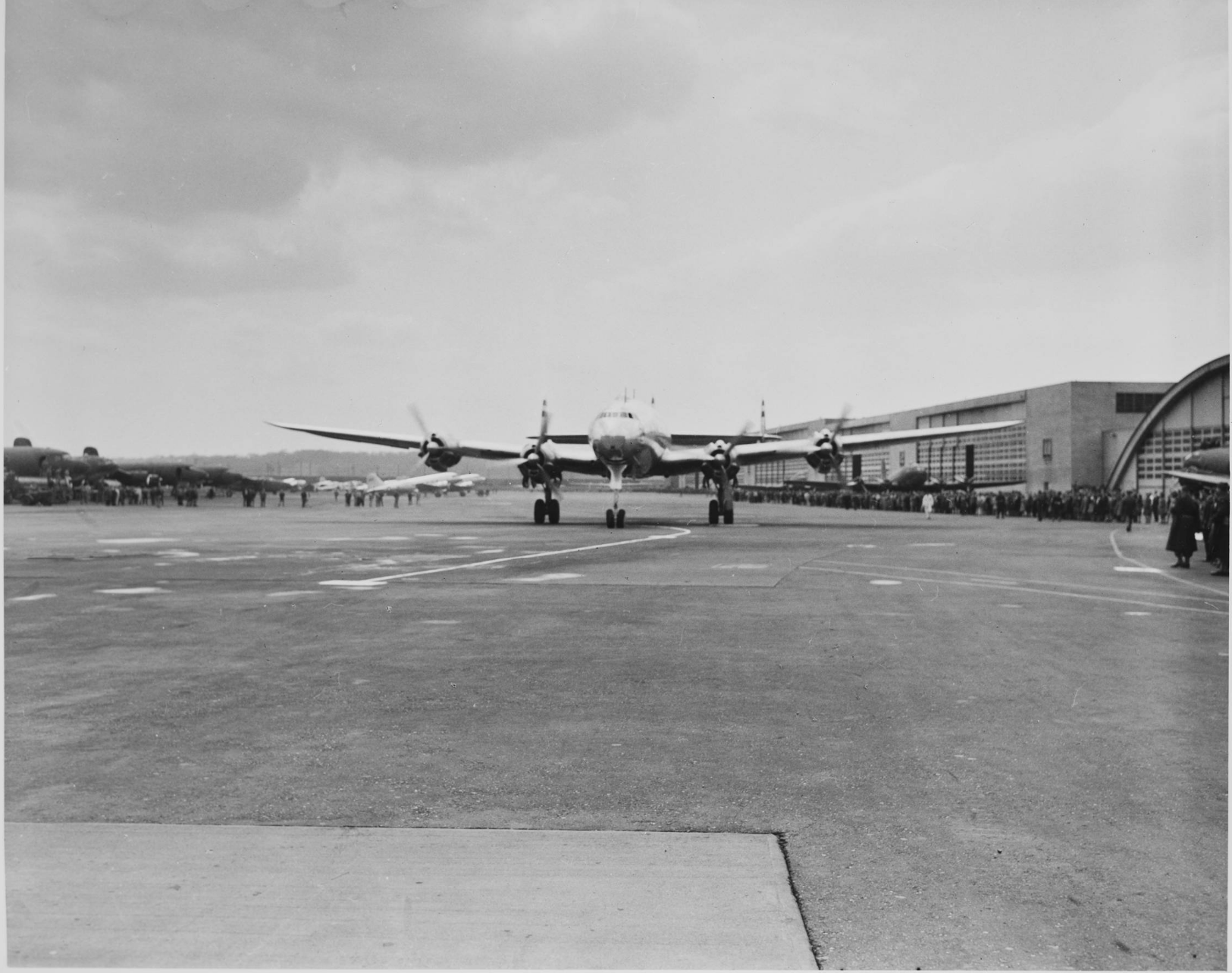
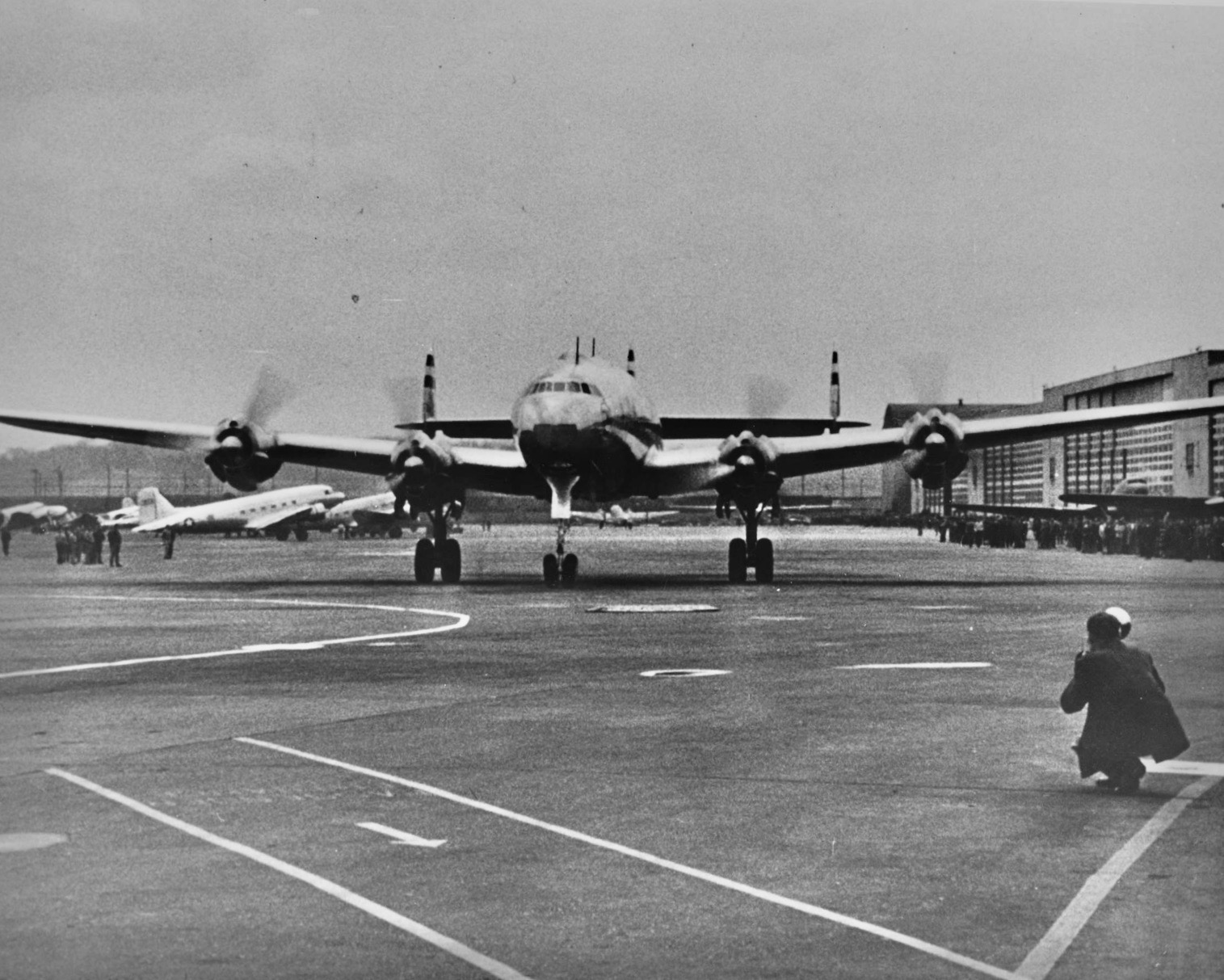
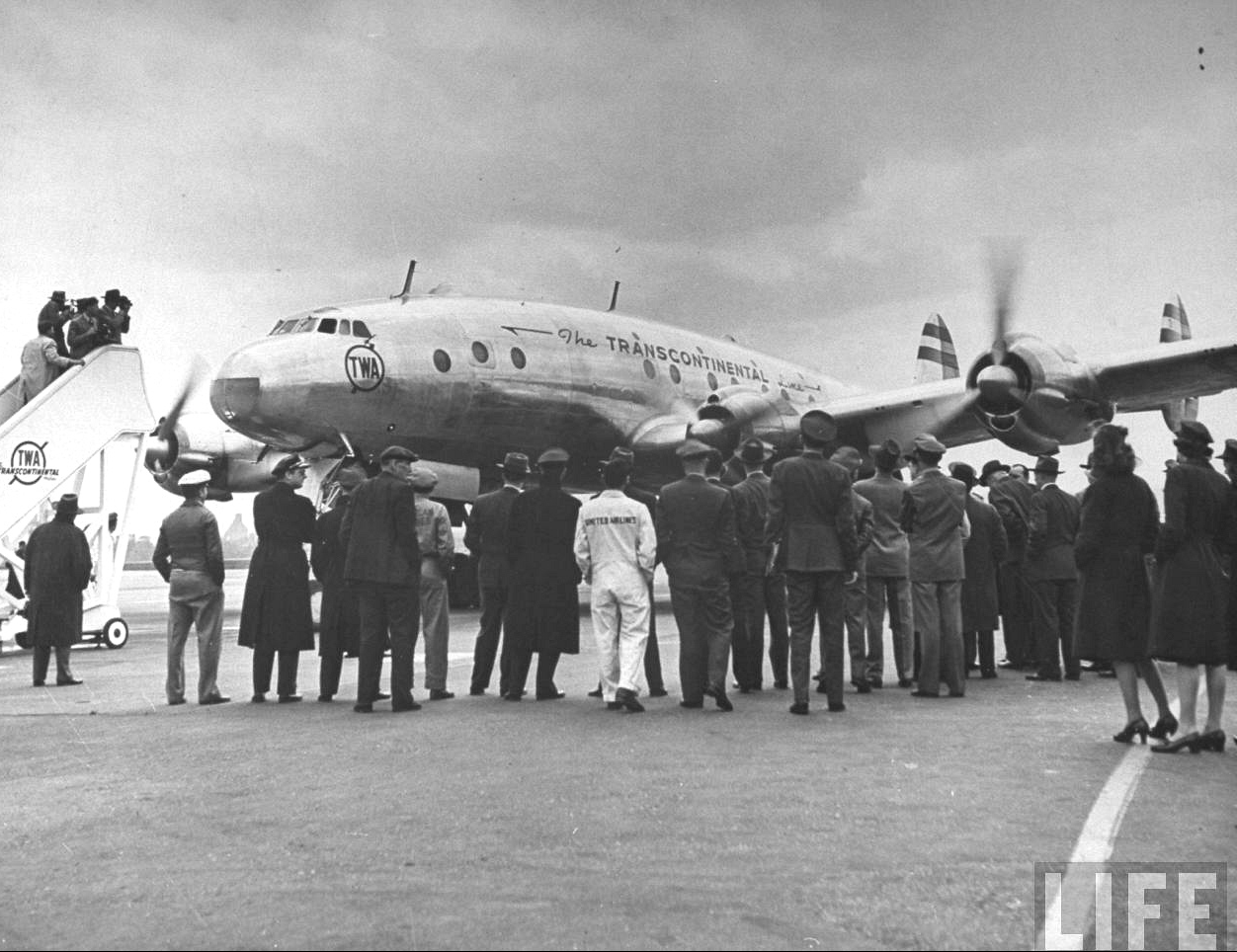
At the time, the only airplanes which were larger than the C-69 were the prototype Douglas B-19 long range bomber and the Martin Mars flying boat. A large crowd watched the arrival of the new airplane. Dignitaries meeting the flight were General Henry H. (“Hap”) Arnold, Chief the U.S. Army Air Forces, and Secretary of Commerce Jesse H. Jones, with Oswald Ryan and Josh Lee of the Civil Aeronautics Board.
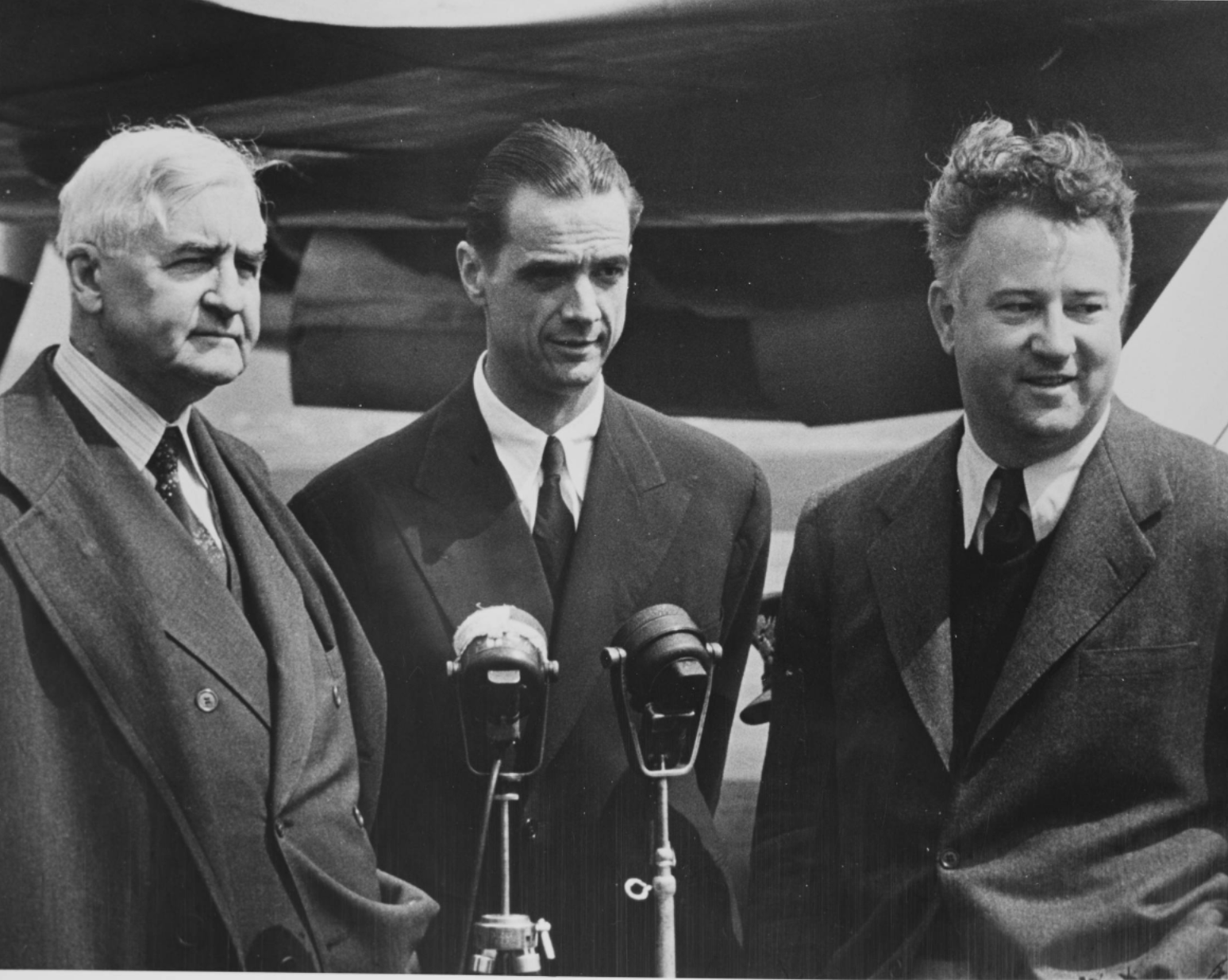
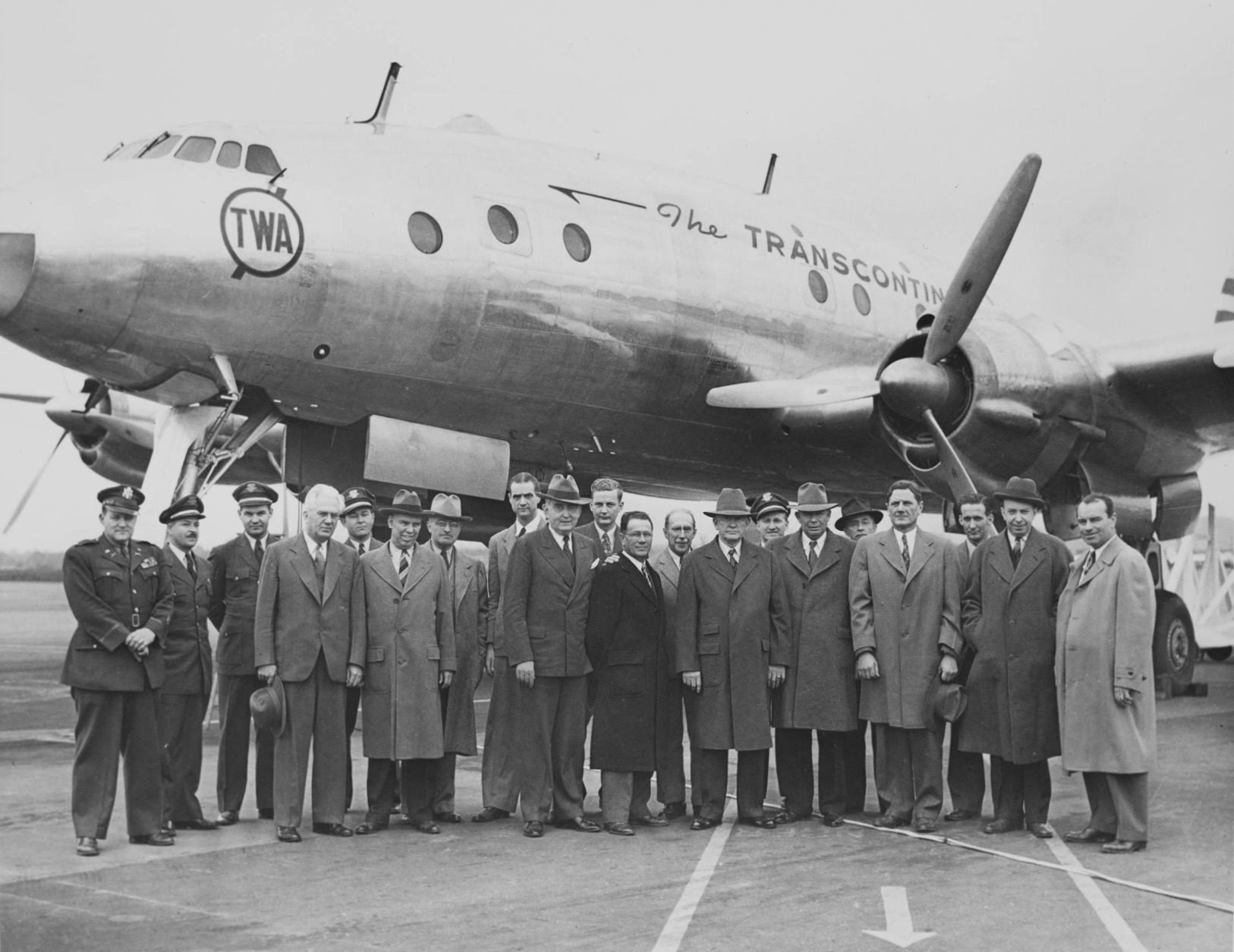
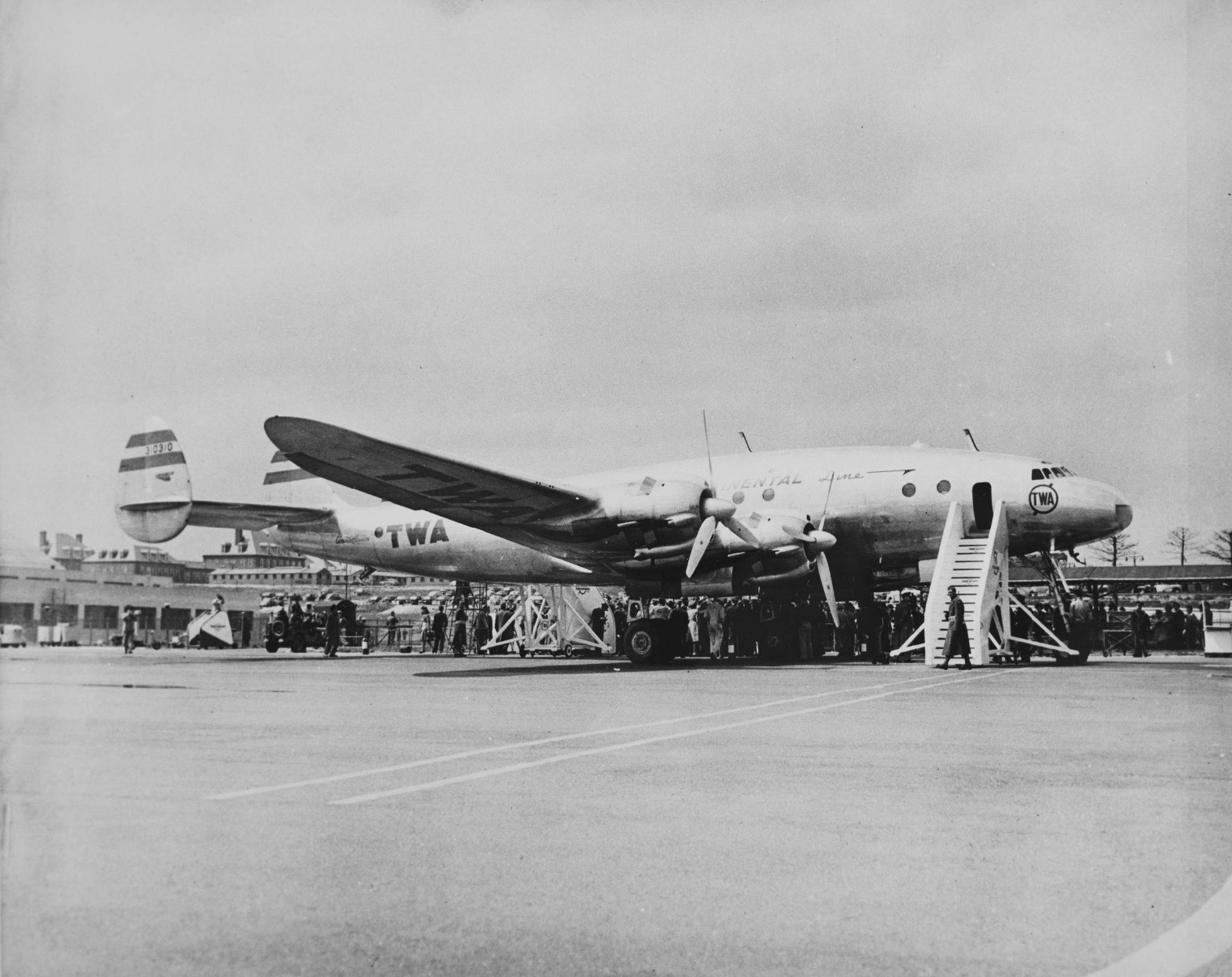
After the arrival ceremonies, the new Lockheed C-69 Constellation was handed over to the Air Corps Air Transport Command and taken to Wright Field, Dayton, Ohio, to begin its military flight tests.
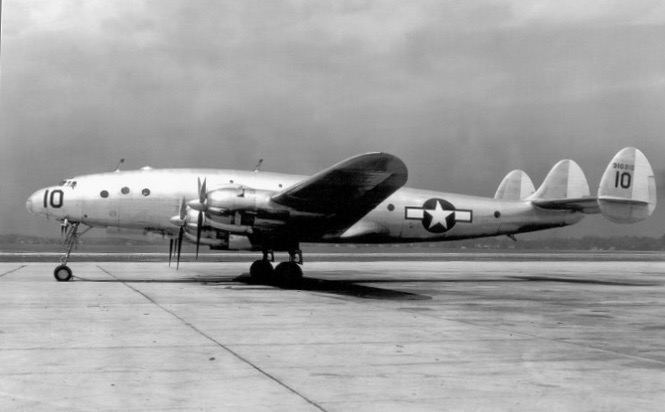
As stated above, 43-10310, c/n 1962, was the first production C-69 Constellation, following the XC-69 prototype, 43-10309, c/n 1961. It had been designed and built by the Lockheed Aircraft Corporation at Burbank, California, for Transcontinental and Western Airlines. The C-69 made its first flight in August 1943, and remained with Lockheed for manufacturer’s tests.
The Constellation was operated by a flight crew of five: two pilots, a navigator, flight engineer and radio operator. It could carry up to 81 passengers. The airplane was 95 feet, 1 3⁄16 inches (28.986 meters) long with a wingspan of 123 feet, 0 inches (37.490 meters), and overall height of 23 feet, 7⅞ inches (7.210 meters). It had an empty weight of 49,392 pounds (22,403.8 kilograms) and maximum takeoff weight of 86,250 pounds (39,122.3 kilograms).
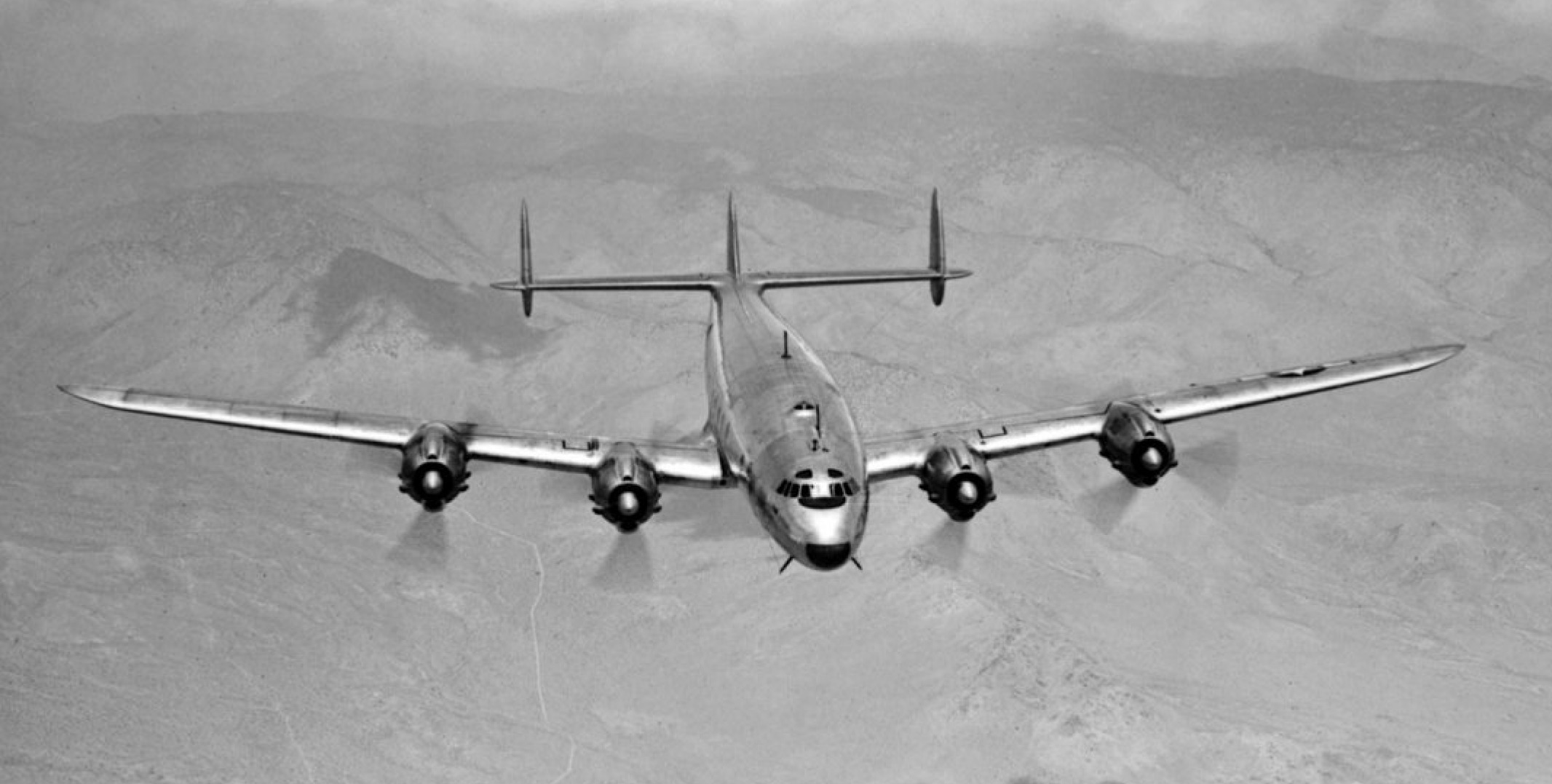
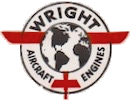 The C-69 was powered by four air-cooled, supercharged, 3,347.662-cubic-inch-displacement (54.858 liter), Wright Aeronautical Division R3500–35 (Cyclone 18 711C18BA2) engines. Also known as the Duplex Cyclone, these were a two-row, 18-cylinder radial engines with a compression ratio of 6.85:1, which required 100/130-octane aviation gasoline. They were rated at 2,000 horsepower at 2,400 r.p.m., and 2,200 horsepower at 2,800 r.p.m. for takeoff (five minute limit), The 745C18BA2 was 6 feet, 4.26 inches (1.937 meters) long, 4 feet, 7.78 inches (1.417 meters) in diameter and weighed 2,707 pounds (1,228 kilograms). The engines drove 15 foot, 2 inch (4.623 meter) diameter, three-bladed Hamilton Standard Hydromatic 43E60 constant-speed propellers through a 0.4375:1 gear reduction. Wright produced 58 of these engines between August 1942 and October 1944.
The C-69 was powered by four air-cooled, supercharged, 3,347.662-cubic-inch-displacement (54.858 liter), Wright Aeronautical Division R3500–35 (Cyclone 18 711C18BA2) engines. Also known as the Duplex Cyclone, these were a two-row, 18-cylinder radial engines with a compression ratio of 6.85:1, which required 100/130-octane aviation gasoline. They were rated at 2,000 horsepower at 2,400 r.p.m., and 2,200 horsepower at 2,800 r.p.m. for takeoff (five minute limit), The 745C18BA2 was 6 feet, 4.26 inches (1.937 meters) long, 4 feet, 7.78 inches (1.417 meters) in diameter and weighed 2,707 pounds (1,228 kilograms). The engines drove 15 foot, 2 inch (4.623 meter) diameter, three-bladed Hamilton Standard Hydromatic 43E60 constant-speed propellers through a 0.4375:1 gear reduction. Wright produced 58 of these engines between August 1942 and October 1944.
The C-69 had a cruise speed of 313 miles per hour (504 kilometers per hour) and a range of 3,995 miles (6,429 kilometers). Its service ceiling was 25,300 feet (7,711 meters).
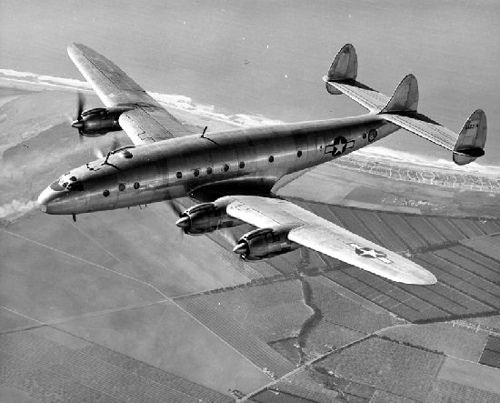
During the War, Lockheed Constellations were operated for the War Department by T.W.A. and Pan American Airways.
On 31 March 1947, War Assets Administration sold 43-10310 for spare parts. It was salvaged to repair other C-69 and L-049 airplanes.
In 1952, Lockheed rebuilt -310 for Inter-National Airways, Inc., which leased it to Flying Tiger Line. It was assigned civil registration NC38936.
NC38936 was destroyed by fire after landing accident during training/certification flight at Burbank, 22 January 1953.
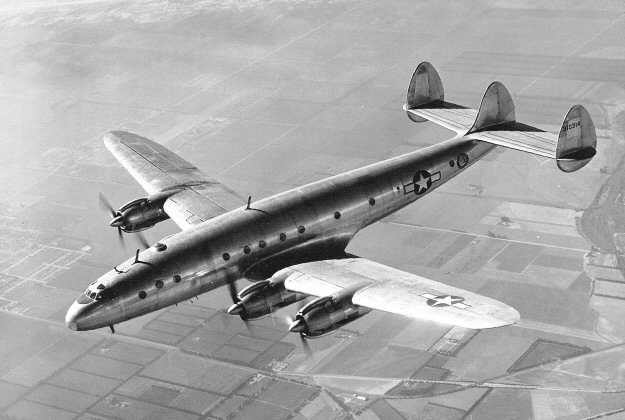
The Los Angeles Times reported:
Fire Destroys Huge Plane on L.A. Test Hop
A rebuilt, four-engine Constellation was destroyed by fire last night seconds after it landed at Lockheed Air Terminal. Ten persons aboard the aircraft escaped without injury.
The huge craft, owned by Inter-Continental Airways, Inc., had made its second test landing for two Civil Aeronautics Authority inspectors when the main landing-gear section burst into flames which quickly spread to the fuselage and other parts of the ship, according to airport tower observers.
The plane’s landing gear apparently failed to function properly as the ship touched down and caused the plane to skid on its belly with the propellers scraping the runway, according to the observers.
Changes in Plane
The Constellation was the second in the C-69 series built by Lockheed Aircraft and during the last two years had undergone changes in construction prior to being chartered by Flying Tiger Lines from the Inter-Continental Airways, according to William Sosnow, purchasing agent for the latter company.
Burbank and Lockheed Fire Departments fought the fire and kept the flames from spreading to nearby hangars and other aircraft. Fire officials said the plane, valued at $1,000,000, was a total loss.
Final Checkout
Sosnow said the plane had received CAA partial approval Wednesday and that last night’s pilot training flight was to complete the inspection routine. It was to have flown to Oakland today for its first pay passengers, he said.
Aboard the plane, Lockheed officials said, were CAA Inspectors M.H. Griffith and Sam Chandler, Senior Pilot C.G. Fredericks, Pilots Lawrence Raab, Sheldon Eichel, August Martin and Leo Gardner; Flight Engineers Frank Lutomski and Robert R. Jackson and Radioman Morris H. Sherry.
All the crewmen were employed by Inter-Continental.
—Los Angeles Times, Vol. LXXI, Friday Morning, 23 January 1953, Part 1, Page 1, Column 3
The Bureau of Aircraft Accidents Archives, (BAAA, or B3A) data base states:
“The crew was engaged in a local test flight. On final approach, during the last segment, the crew inadvertently raised the gears. The four engine aircraft belly landed and slid for dozen yards before coming to rest in flames. While all five crew members were unhurt, the aircraft was lost.”
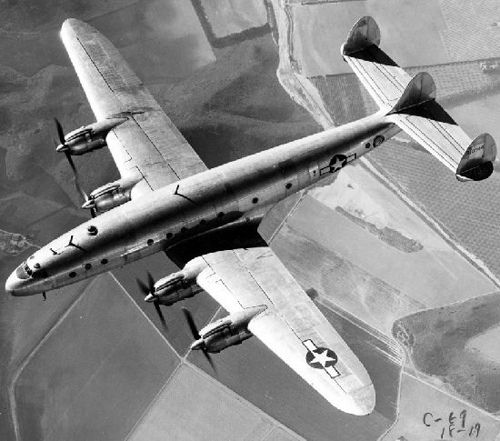
¹ LCOL Clarence A. Shoop USAAC. TWA: Lawrence J. Chiappino, Test Pilot; Leo Baron, Robert L. Loomis, pilot; Ed J. Minser, Chief Meteorologist; Orville R. Olson, chief clerk, Kansas City traffic department; Lee Spruill, Richard De Campo, Flight Engineer. Lockheed: Rudy L. Thoren, Chief Flight Test Engineer; Richard Stanton; Thomas Watkins. S.J. Solomon, Chairman, Airlines Committee for Aviation Policy
² TDiA checked with the National Aeronautic Association, which does not have any information about this flight.
³ The AIRCRAFT YEAR BOOK For 1945, Howard Mingos, Editor. Aeronautical Chamber of Commerce of America, Inc., Lanciar Publishers, Inc., New York. Chapter IV, Page 123.
© 2020, Bryan R. Swopes
